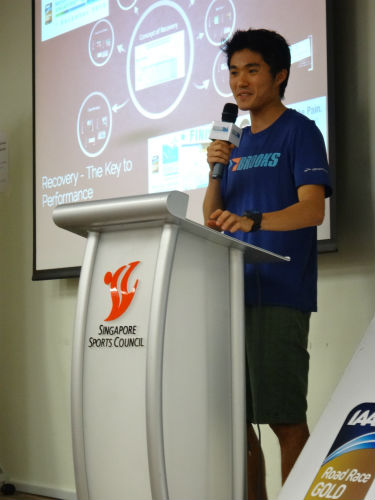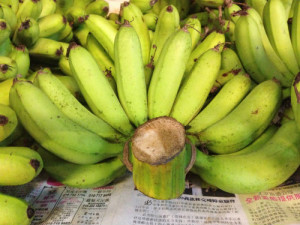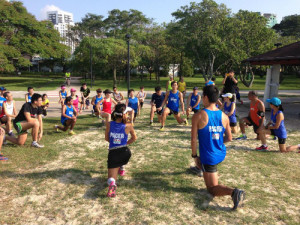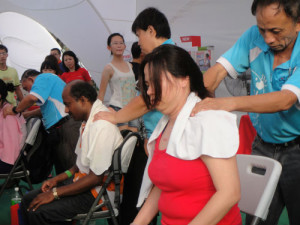Getting six to seven hours of sleep a night is beneficial to a distance runner.
Last Saturday, I took part in one of the training clinics organised by the Standard Chartered Marathon Singapore team. At this clinic, medical doctor and top Singapore marathoner, Mok Ying Ren, talked about recovery from running. He said that ensuring optimum performance recovery, including having adequate sleep, is in fact the most important part of sports training.
Here are tips shared at the training clinic.
Sleep: The best way to recover from a run
According to Mok, sleep is actually the best form of recovery but many runners and athletes tend to forget about this, because of time constraints.
But sleep is actually important, because it is crucial for muscle repair, growth and regeneration. Also, at the same time, the body’s stress levels are greatly reduced when you are sleeping.
Mok himself tries to get around six to seven hours of sleep a night – which is the optimum range of hours for a healthy adult individual.
Nutrition
The right nutrition is also important for recovery after a long training run.
After a session of long exercise, your insulin levels will be higher for the 30 minutes to two hours straight after the session so you should preferably get food into your body system during this period of time, to allow the nutrients to be absorbed into the bloodstream.
Getting food into your body is especially important if you are training twice a day, as Mok himself does. Simple food items can include protein recovery drinks, bananas and chocolate milk.
As well, eating a full meal of solid food after you have completed an exercise session is also quite important. This is especially so if you had gone out running or exercising before breakfast and you were on an empty stomach during your workout.
Active Recovery
The third most important tip is to have active recovery. For many recreational runners, they may just spend the next day slacking at home and watching television, after a hard workout session.
But it may benefit the body more to do a low intensity session, such as a slow jog or other cross-training exercises like swimming or using the elliptical trainer. According to Mok, these help to reduce muscle stiffness and maintain your aerobic conditioning. But make sure you relax during these sessions and do not hammer your body even harder.
Cooling Down Exercises
After a hard workout, doing roughly about ten to 20 minutes of cooling down exercises, usually low in intensity will help the body to calm down and get back into a relaxed state. These include stretching motions and slow walking.
Even though medical studies have shown that cooling down exercises have no proven medical benefit, Mok still recommends them because they will help you feel better after the workout.
Compression Wear
While some runners wear compression clothing during their runs, Mok actually recommends that you wear it to aid in recovery after the run instead.
This is because after running, such clothing compresses your veins and increases your body’s blood pumping efficiency, thus helping to speed up recovery.
During runs, it does not help because according to Mok, such compression wear reduces heat loss from your body, thus making runners feel hotter and even more uncomfortable.
Besides running though, compression wear is also useful during long-haul flights to prevent deep vein thrombosis.
Sports Massages
While sports massages do help you to feel relaxed and release your muscles to make them softer, Mok recommends that this is not necessary. But if you have the finances and time, do go ahead and get yourself a massage.
If you are going for a massage, do it about three to four days before your race, and again two days after it to aid in muscle recovery. On race day itself, such massages do not really help much and are used more to advertise the companies doing them.
Cryotherapy (Ice bath)
Cryotherapy is where you soak yourself in a bath full of ice for several minutes, straight after your race. Usually, several kilos of ice are used.
The concept behind it is that it is supposed to reduce the inflammation of the muscles and flush any toxins in the body back to the liver.
However, this recovery method is not practical, according to Mok because of the efforts required to get hold of, and set up the ice bath. Also, you will have to fork out money to buy several kilos of ice on a weekly basis for your training runs. So if you are interested to use this method to help you recover, try to limit it to only after a race, and not a hard training session.
To help participants out with training for the Standard Chartered Marathon Singapore in early December, the organising team is conducting a series of training talks to give tips and insightful feedback to runners.
While the talks are open to runners taking part in all categories (10km, 21km and 42km races), the tips are geared more to those participating in the 42km category.
If you have registered for the Standard Chartered Marathon Singapore, you can find out more about the other training talks here. Each one costs $10.





Leave a Comment